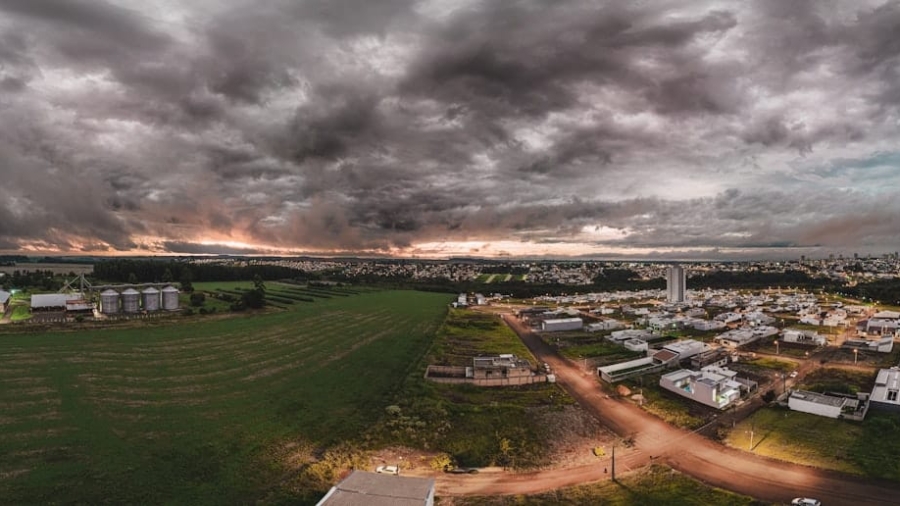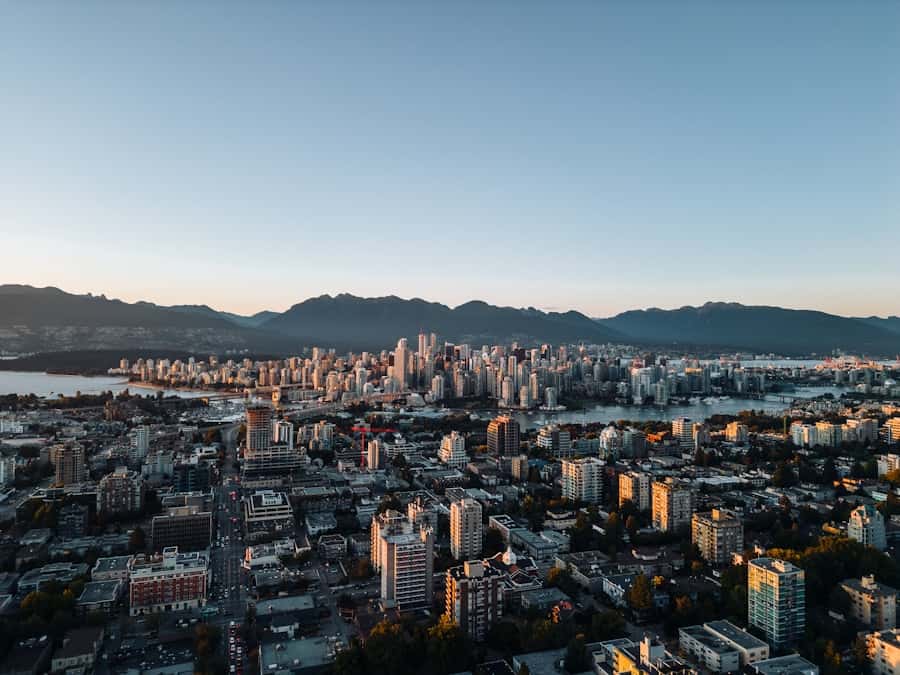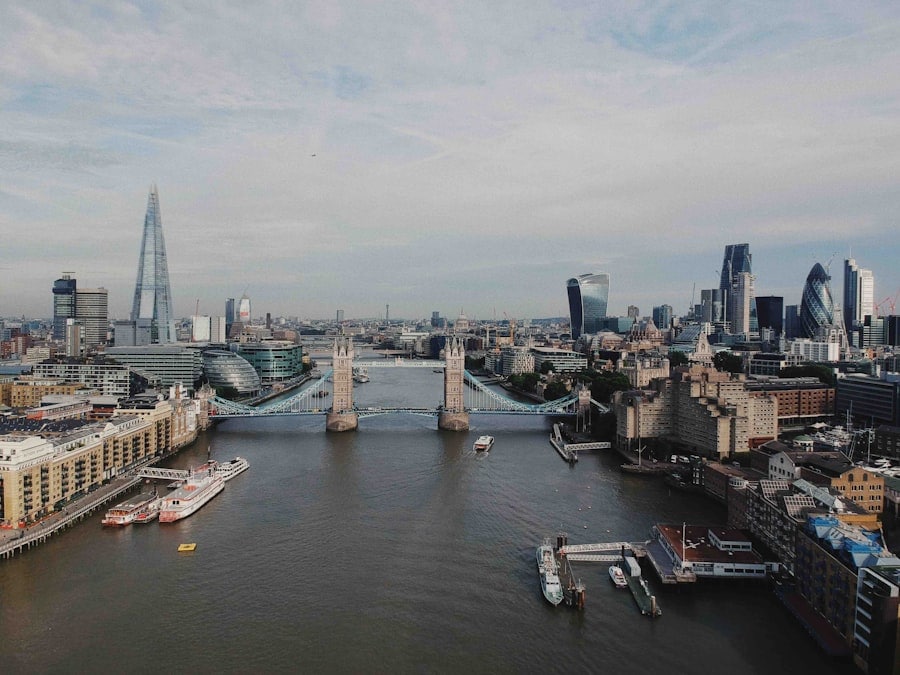The advent of consumer drones has revolutionized the way individuals interact with their environment, particularly in urban settings. These unmanned aerial vehicles (UAVs) have transitioned from niche gadgets to mainstream tools, enabling a plethora of applications ranging from photography and videography to delivery services and recreational flying. As urban areas become increasingly congested, the integration of consumer drones into these airspaces presents both opportunities and challenges.
The ability to capture stunning aerial views of cityscapes or deliver packages directly to consumers’ doorsteps exemplifies the potential of drones to enhance urban living. However, this burgeoning technology also raises critical questions about safety, regulation, and the overall impact on urban airspace management. Urban airspaces are characterized by their complexity, with a multitude of factors influencing drone operations.
High-rise buildings, dense populations, and existing air traffic create a unique environment that necessitates careful consideration of how consumer drones can be safely and effectively integrated. As cities continue to grow and evolve, the role of drones in urban airspace is likely to expand, prompting discussions about their regulation, technological advancements, and the implications for urban infrastructure. Understanding the dynamics of consumer drones in these environments is essential for stakeholders, including policymakers, urban planners, and drone enthusiasts alike.
Key Takeaways
- Consumer drones are becoming increasingly popular in urban airspaces, raising concerns about safety and regulations.
- Safety and regulations for consumer drones in urban airspaces are crucial to prevent accidents and ensure responsible use.
- Advancements in technology, such as collision avoidance systems and geofencing, are improving the safety and capabilities of consumer drones in urban airspaces.
- Challenges such as privacy concerns and air traffic management need to be addressed, with solutions like remote identification and traffic management systems.
- Integrating consumer drones with urban infrastructure can enhance delivery services, surveillance, and emergency response capabilities.
Safety and Regulations in Urban Airspaces for Consumer Drones
Safety is paramount when it comes to the operation of consumer drones in urban airspaces. The potential for accidents involving pedestrians, vehicles, and other aircraft necessitates stringent regulations to mitigate risks. Regulatory bodies such as the Federal Aviation Administration (FAA) in the United States have established guidelines that govern drone usage, including altitude restrictions, no-fly zones, and requirements for remote pilot certification.
These regulations are designed to ensure that drone operators are knowledgeable about safe flying practices and are held accountable for their actions. In addition to federal regulations, local governments often impose their own rules regarding drone operations within city limits. For instance, many municipalities have designated specific areas where drones can be flown, while others have outright bans in densely populated areas or near critical infrastructure such as airports and hospitals.
The challenge lies in balancing the desire for innovation and recreational use with the need for public safety. As drone technology continues to evolve, so too must the regulatory frameworks that govern their use. This ongoing dialogue between regulators and the drone community is crucial for fostering a safe environment for all urban airspace users.
Advancements in Technology for Consumer Drones in Urban Airspaces
The rapid advancement of technology has significantly enhanced the capabilities of consumer drones, making them more suitable for urban environments. Innovations such as improved battery life, enhanced navigation systems, and advanced obstacle avoidance sensors have transformed how drones operate in complex urban landscapes. For example, many modern drones are equipped with GPS and inertial measurement units (IMUs) that allow for precise positioning and stability even in challenging conditions such as high winds or crowded areas.
Furthermore, the integration of artificial intelligence (AI) into drone systems has opened new avenues for autonomous flight. Drones can now analyze their surroundings in real-time, making decisions based on data collected from various sensors. This capability is particularly beneficial in urban settings where obstacles such as buildings, trees, and power lines are prevalent.
AI-driven drones can autonomously navigate through these environments while avoiding collisions, thereby enhancing safety and operational efficiency.
Challenges and Solutions for Consumer Drones in Urban Airspaces
Despite the promising advancements in drone technology, several challenges remain when it comes to operating these devices in urban airspaces. One significant issue is the risk of interference with manned aircraft operations. Urban areas often have busy air traffic due to nearby airports or heliports, which can create dangerous situations if drones inadvertently enter controlled airspace.
To address this challenge, developers are working on geofencing technology that restricts drone flights in designated no-fly zones. This technology uses GPS coordinates to create virtual boundaries that prevent drones from entering sensitive areas. Another challenge is public perception and acceptance of drones in urban environments.
Concerns about privacy invasion, noise pollution, and potential accidents can lead to resistance from local communities. To mitigate these concerns, drone operators must engage with the public and demonstrate responsible flying practices. Educational initiatives that inform residents about the benefits of drones—such as their use in emergency response or environmental monitoring—can help foster a more positive perception.
Additionally, implementing noise-reduction technologies and establishing clear guidelines for drone usage can alleviate some public apprehensions.
Integration of Consumer Drones with Urban Infrastructure
The integration of consumer drones into urban infrastructure represents a significant opportunity for enhancing city services and improving quality of life. For instance, drones can be utilized for infrastructure inspections, allowing city officials to monitor bridges, roads, and buildings without the need for costly scaffolding or manual inspections. This capability not only saves time but also enhances safety by reducing the need for workers to operate in potentially hazardous conditions.
Moreover, the potential for drone delivery services is gaining traction as cities explore ways to streamline logistics and reduce traffic congestion. Companies like Amazon and Google have been testing drone delivery systems that could revolutionize how goods are transported within urban areas. By utilizing drones for last-mile deliveries, businesses can reduce reliance on traditional delivery vehicles that contribute to traffic congestion and pollution.
However, successful integration requires collaboration between drone operators, local governments, and existing transportation networks to ensure seamless operations.
Impact of Consumer Drones on Urban Airspaces
The impact of consumer drones on urban airspaces is multifaceted, influencing various aspects of city life. On one hand, drones offer innovative solutions for businesses and individuals alike; they provide new avenues for creativity in photography and videography while also enabling efficient delivery services that cater to the demands of modern consumers. The ability to capture real-time aerial footage can enhance tourism marketing efforts or assist in urban planning by providing valuable insights into land use patterns.
Conversely, the proliferation of consumer drones raises concerns about airspace congestion and safety risks.
Additionally, issues related to privacy invasion become more pronounced as drones equipped with cameras become commonplace in urban settings.
Striking a balance between harnessing the benefits of consumer drones while addressing these concerns is essential for maintaining public trust and ensuring safe operations within urban airspaces.
Future Trends for Consumer Drones in Urban Airspaces
Looking ahead, several trends are likely to shape the future of consumer drones in urban airspaces. One prominent trend is the continued development of regulatory frameworks that adapt to technological advancements. As drone technology evolves, regulators will need to keep pace by creating policies that address emerging challenges while promoting innovation.
This may include establishing designated drone corridors within cities or implementing remote identification systems that allow authorities to track drone flights in real-time. Another trend is the increasing collaboration between technology companies and urban planners to create smart cities that leverage drone technology for various applications. For instance, integrating drones into public safety initiatives could enhance emergency response times by providing first responders with real-time aerial views of incidents.
Additionally, advancements in battery technology may lead to longer flight times and greater payload capacities, further expanding the range of applications for consumer drones in urban environments.
Conclusion and Considerations for Consumer Drone Users in Urban Airspaces
As consumer drones continue to gain traction in urban airspaces, users must remain informed about safety regulations and best practices to ensure responsible operation. Understanding local laws regarding drone usage is crucial for avoiding fines or legal repercussions while promoting a positive image of drone operators within communities. Engaging with local authorities and participating in educational programs can help foster a culture of safety and responsibility among drone users.
Moreover, as technology advances and new applications emerge, consumers should stay abreast of developments within the industry. Embracing innovations such as AI-driven navigation systems or enhanced battery technologies can enhance operational efficiency while contributing to safer flying practices. Ultimately, responsible use of consumer drones has the potential to enrich urban life by providing new opportunities for creativity, efficiency, and connectivity within increasingly complex city environments.
If you’re interested in the latest trends in technology, you may want to check out this article on Unlock a New World of Possibilities with Samsung Galaxy Z Fold4. Just like how consumer drones are adapting to urban airspaces, the Samsung Galaxy Z Fold4 is pushing the boundaries of what is possible with mobile devices. Both articles showcase how technology is constantly evolving to meet the needs of consumers in innovative ways.
FAQs
What are consumer drones?
Consumer drones are small, unmanned aerial vehicles that are operated by individuals for recreational or non-commercial purposes. They are equipped with cameras and other sensors, and are controlled remotely by a pilot.
How are consumer drones adapting to urban airspaces?
Consumer drones are adapting to urban airspaces by incorporating technologies such as geofencing, obstacle avoidance, and automated flight paths to ensure safe and responsible operation in densely populated areas. Additionally, some drones are being designed to be quieter and less obtrusive to minimize disruption to urban residents.
What is geofencing in the context of consumer drones?
Geofencing is a technology that uses GPS or RFID to create virtual boundaries around specific geographical areas. In the context of consumer drones, geofencing can be used to prevent drones from flying into restricted or sensitive areas such as airports, government buildings, and crowded urban spaces.
How do consumer drones incorporate obstacle avoidance technology?
Consumer drones are incorporating obstacle avoidance technology through the use of sensors such as cameras, ultrasonic sensors, and LiDAR (Light Detection and Ranging) to detect and avoid obstacles in their flight path. This technology helps prevent collisions with buildings, trees, and other objects in urban environments.
What are some examples of automated flight paths in consumer drones?
Some consumer drones are equipped with features such as pre-programmed flight routes, follow-me modes, and point-of-interest tracking, which allow them to autonomously navigate through urban airspaces while avoiding obstacles and adhering to local regulations. These features enable users to capture aerial footage and images with ease and precision.
How are consumer drones being designed to be quieter in urban environments?
Consumer drones are being designed with quieter propulsion systems, such as brushless motors and improved aerodynamics, to reduce noise levels and minimize disturbance to urban residents. Additionally, some drones are incorporating noise-reducing materials and technologies to further mitigate their acoustic impact in urban airspaces.



